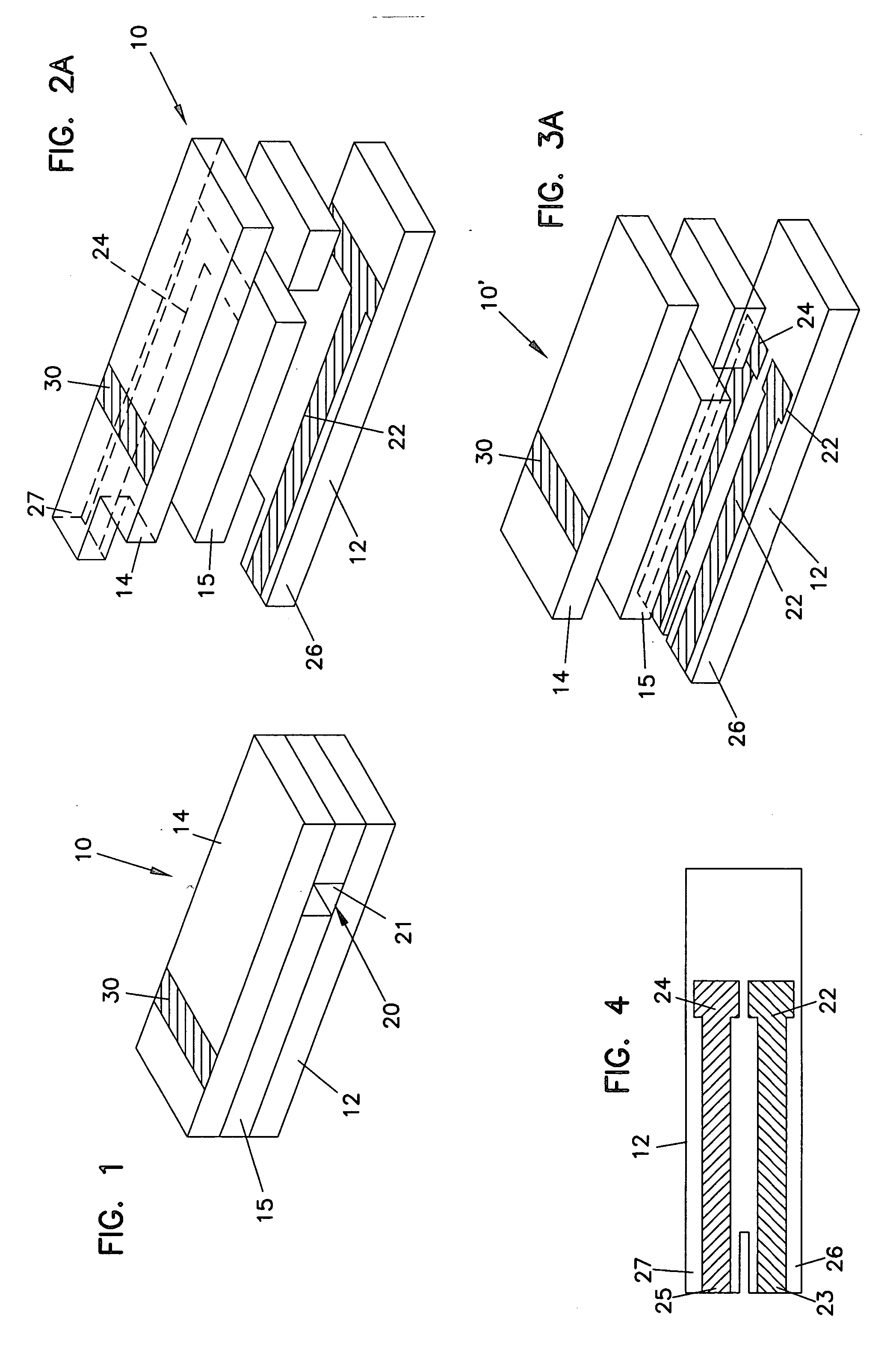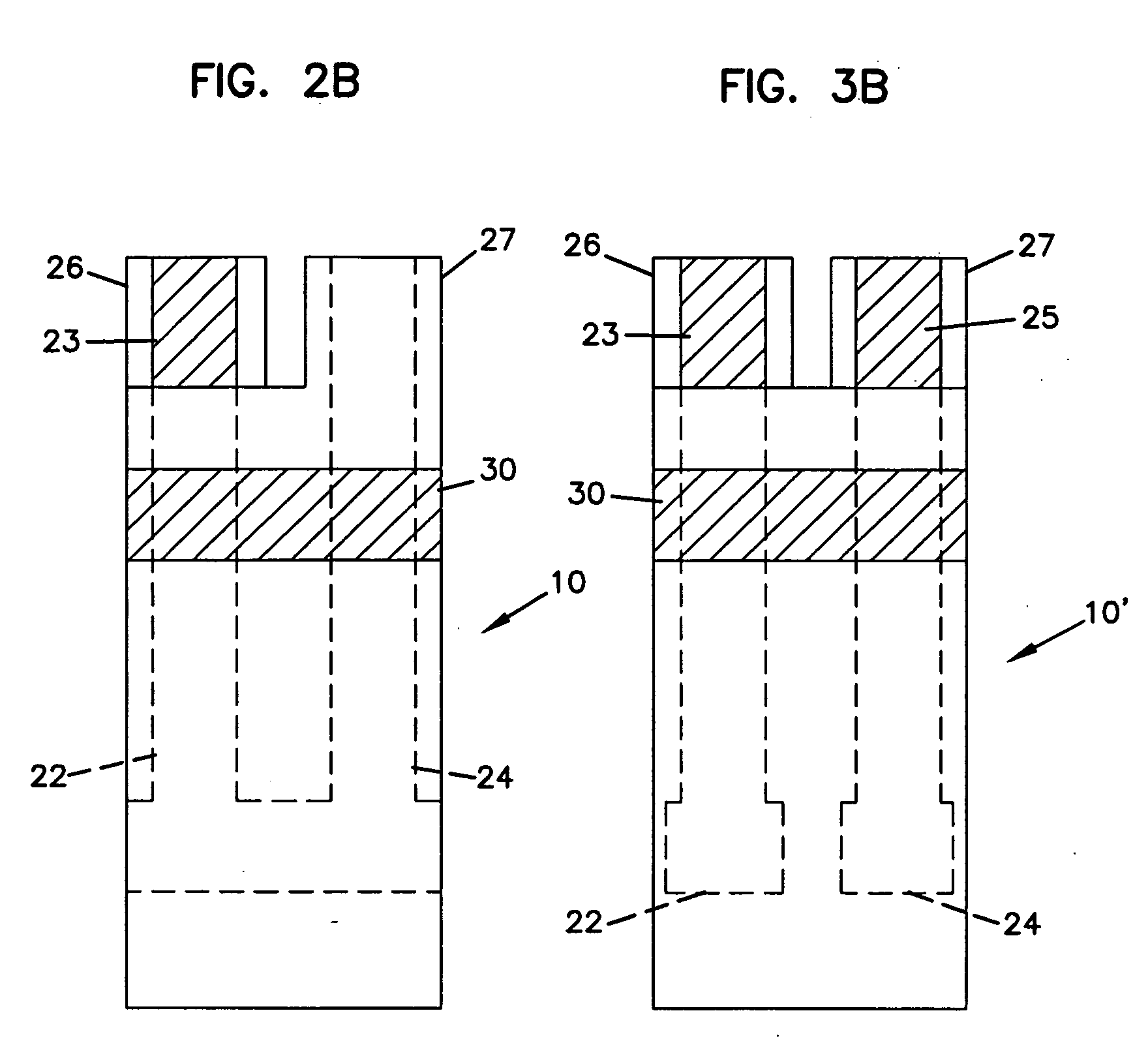Analyte sensor with insertion monitor, and methods
an analyte sensor and monitor technology, applied in the field of analyte sensors, can solve the problems of inconvenient patient procedures, and achieve the effect of efficient and reliable methods
- Summary
- Abstract
- Description
- Claims
- Application Information
AI Technical Summary
Benefits of technology
Problems solved by technology
Method used
Image
Examples
first embodiment
[0052] Referring to the Drawings in general and FIGS. 1 and 2A in particular, a sensor strip 10 is schematically illustrated. Sensor strip 10 has a first substrate 12, a second substrate 14, and a spacer 15 positioned therebetween. Sensor strip 10 includes at least one working electrode 22 and at least one counter electrode 24. Sensor strip 10 also includes insertion monitor 30.
Sensor Strips
[0053] Referring to FIGS. 1, 2A and 2B in particular, sensor strip 10 has first substrate 12, second substrate 14, and spacer 15 positioned therebetween. Sensor strip 10 includes working electrode 22, counter electrode 24 and insertion monitor 30. Sensor strip 10 is a layered construction, in certain embodiments having a generally rectangular shape, i.e., its length is longer than its width, although other shapes are possible as well. Sensor strip 10′ of FIGS. 3A, 3B and 4 also has first substrate 12, second substrate 14, spacer 15, working electrode 22, counter electrode 24 and insertion monit...
second embodiment
[0065] At least one working electrode is positioned on one of first substrate 12 and second substrate 14. In all of FIGS. 2A though 4, working electrode 22 is illustrated on substrate 12. Working electrode 22 extends from the sample chamber 20 to the other end of the sensor 10 as an electrode extension called a “trace”. The trace provides a contact pad 23 for providing electrical connection to a meter or other device to allow for data and measurement collection, as will be described later. Contact pad 23 can be positioned on a tab 26 that extends from the substrate on which working electrode 22 is positioned, such as substrate 12. In one embodiment, a tab has more than one contact pad positioned thereon. In a second embodiment, a single contact pad is used to provide a connection to one or more electrodes; that is, multiple electrodes are coupled together and are connected via one contact pad.
[0066] Working electrode 22 can be a layer of conductive material such as gold, carbon, pla...
PUM
| Property | Measurement | Unit |
|---|---|---|
| volume | aaaaa | aaaaa |
| volume | aaaaa | aaaaa |
| volume | aaaaa | aaaaa |
Abstract
Description
Claims
Application Information
 Login to View More
Login to View More - R&D
- Intellectual Property
- Life Sciences
- Materials
- Tech Scout
- Unparalleled Data Quality
- Higher Quality Content
- 60% Fewer Hallucinations
Browse by: Latest US Patents, China's latest patents, Technical Efficacy Thesaurus, Application Domain, Technology Topic, Popular Technical Reports.
© 2025 PatSnap. All rights reserved.Legal|Privacy policy|Modern Slavery Act Transparency Statement|Sitemap|About US| Contact US: help@patsnap.com



